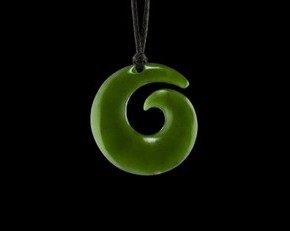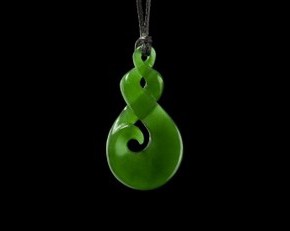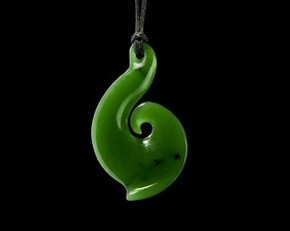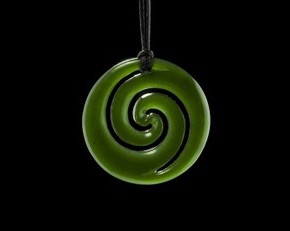Green Jade
Jade - a gemstone of unique symbolic energy, and unique in the myths that surround it. With its beauty and wide-ranging expressiveness, jade has held a special attraction for mankind for thousands of years.
'Jade', or yu, as it is called in China, is strictly speaking a generic term for two different gems, nephrite and jadeite. The name is derived from the Spanish 'piedra de ijada', loin-stone, jade having been recognised by the Amerindians as a remedy for kidney ailments. Because of its beneficial effect on the kidneys, the stone was also known as 'lapis nephriticus'. That, indeed, is where the term 'nephrite' came from.
Jadeite and nephrite are both regarded in China as 'zhen yu', 'genuine jade'. It was not until the beginning of the 19th century that mineralogists and gemmologists started to differentiate between them, since they bear a considerable resemblance to each other in terms of their appearance, their hardness and the properties they exhibit when being processed. Both are tough, since they consist of dense, close-grained, matted aggregates, but they differ from one another in their chemical composition and colours. Nephrite ranges mainly from mid to dark green or grey-green, but it can also be white, yellowish or reddish. Rarer, and somewhat tougher, jadeite displays hues which include green, but also white or pink, and reds, blacks, browns and violets. In both minerals, the way the colour is distributed varies a great deal. Only in the very finest jade is the colour evenly distributed. Both nephrite and jadeite often have veins, blemishes and streaks running through them, though these may not always be regarded as flaws. On the contrary, some of these patterns are considered particularly valuable.




In New Zealand green jadeite is known as 'greenstone' or 'pounamu' and has been discovered, worked on and traded by the New Zealand indigenous people, the Maori, for over 1,000 years. Jade was used for tools, weapons and adornment and traded for food and other necessities. It has great spiritual meaning to the Maoris.
Jade has commonly been called greenstone in New Zealand since the early European days when early settlers did not know jade as a semi precious stone.
New Zealand Jade is found in several different areas all close to the alpine fault line, though mainly on the West Coast of the South Island and the Arahura River. It is also found in South Westland below Haast.
New Zealand Jade has a chemical composition of hydrated calcium magnesium silicate with varying amounts of iron.
58% stone
20% magnesium oxide
13% calcium oxide
2% water
7% iron
On Mohs' scale of hardness of 1 to 10, Jade is 6 to 7. Diamond drill tips and saws are required to work it.
Jade is a metamorphic stone formed under heat and pressure estimated to have formed 60 miles underground. Through erosion and movement the jade eventually finds its way through the earth's crust in the form of boulders.
Tiare Black Pearl features New Zealand green nephrite jade earrings and pendants from time to time (as seen in the pictures above) but also green jadeite and nephrite from Canada and China. Watch out for fine Burmese jade around November and December as Alan visits Myanmar around this time each year and buys directly from the jade craftsmen and women.
Jade has commonly been called greenstone in New Zealand since the early European days when early settlers did not know jade as a semi precious stone.
New Zealand Jade is found in several different areas all close to the alpine fault line, though mainly on the West Coast of the South Island and the Arahura River. It is also found in South Westland below Haast.
New Zealand Jade has a chemical composition of hydrated calcium magnesium silicate with varying amounts of iron.
58% stone
20% magnesium oxide
13% calcium oxide
2% water
7% iron
On Mohs' scale of hardness of 1 to 10, Jade is 6 to 7. Diamond drill tips and saws are required to work it.
Jade is a metamorphic stone formed under heat and pressure estimated to have formed 60 miles underground. Through erosion and movement the jade eventually finds its way through the earth's crust in the form of boulders.
Tiare Black Pearl features New Zealand green nephrite jade earrings and pendants from time to time (as seen in the pictures above) but also green jadeite and nephrite from Canada and China. Watch out for fine Burmese jade around November and December as Alan visits Myanmar around this time each year and buys directly from the jade craftsmen and women.